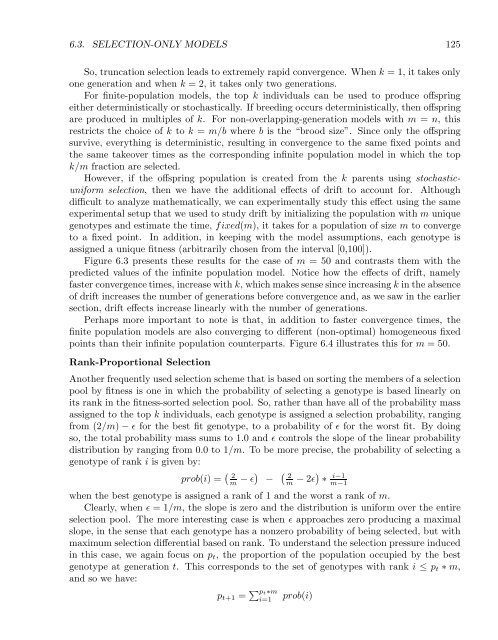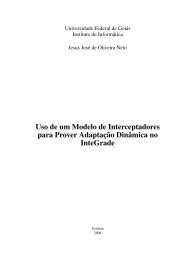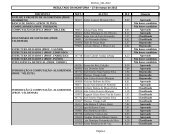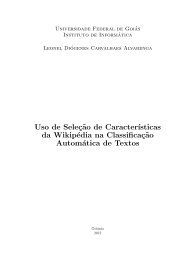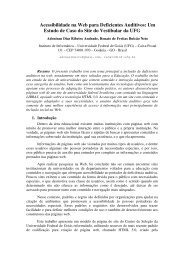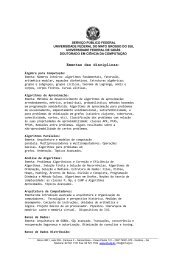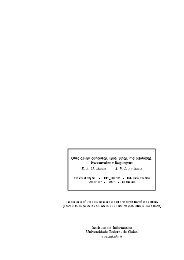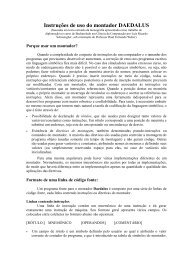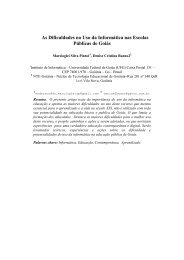Evolutionary Computation : A Unified Approach
Evolutionary Computation : A Unified Approach
Evolutionary Computation : A Unified Approach
Create successful ePaper yourself
Turn your PDF publications into a flip-book with our unique Google optimized e-Paper software.
6.3. SELECTION-ONLY MODELS 125<br />
So, truncation selection leads to extremely rapid convergence. When k = 1, it takes only<br />
one generation and when k = 2, it takes only two generations.<br />
For finite-population models, the top k individuals can be used to produce offspring<br />
either deterministically or stochastically. If breeding occurs deterministically, then offspring<br />
are produced in multiples of k. For non-overlapping-generation models with m = n, this<br />
restricts the choice of k to k = m/b where b is the “brood size”. Since only the offspring<br />
survive, everything is deterministic, resulting in convergence to the same fixed points and<br />
the same takeover times as the corresponding infinite population model in which the top<br />
k/m fraction are selected.<br />
However, if the offspring population is created from the k parents using stochasticuniform<br />
selection, then we have the additional effects of drift to account for. Although<br />
difficult to analyze mathematically, we can experimentally study this effect using the same<br />
experimental setup that we used to study drift by initializing the population with m unique<br />
genotypes and estimate the time, fixed(m), it takes for a population of size m to converge<br />
to a fixed point. In addition, in keeping with the model assumptions, each genotype is<br />
assigned a unique fitness (arbitrarily chosen from the interval [0,100]).<br />
Figure 6.3 presents these results for the case of m = 50 and contrasts them with the<br />
predicted values of the infinite population model. Notice how the effects of drift, namely<br />
faster convergence times, increase with k, which makes sense since increasing k in the absence<br />
of drift increases the number of generations before convergence and, as we saw in the earlier<br />
section, drift effects increase linearly with the number of generations.<br />
Perhaps more important to note is that, in addition to faster convergence times, the<br />
finite population models are also converging to different (non-optimal) homogeneous fixed<br />
points than their infinite population counterparts. Figure 6.4 illustrates this for m = 50.<br />
Rank-Proportional Selection<br />
Another frequently used selection scheme that is based on sorting the members of a selection<br />
pool by fitness is one in which the probability of selecting a genotype is based linearly on<br />
its rank in the fitness-sorted selection pool. So, rather than have all of the probability mass<br />
assigned to the top k individuals, each genotype is assigned a selection probability, ranging<br />
from (2/m) − ɛ for the best fit genotype, to a probability of ɛ for the worst fit. By doing<br />
so, the total probability mass sums to 1.0 andɛ controls the slope of the linear probability<br />
distribution by ranging from 0.0 to1/m. To be more precise, the probability of selecting a<br />
genotype of rank i is given by:<br />
prob(i) = ( 2<br />
m − ɛ) − ( 2<br />
m − 2ɛ) ∗ i−1<br />
m−1<br />
when the best genotype is assigned a rank of 1 and the worst a rank of m.<br />
Clearly, when ɛ =1/m, the slope is zero and the distribution is uniform over the entire<br />
selection pool. The more interesting case is when ɛ approaches zero producing a maximal<br />
slope, in the sense that each genotype has a nonzero probability of being selected, but with<br />
maximum selection differential based on rank. To understand the selection pressure induced<br />
in this case, we again focus on p t , the proportion of the population occupied by the best<br />
genotype at generation t. This corresponds to the set of genotypes with rank i ≤ p t ∗ m,<br />
and so we have:<br />
p t+1 = ∑ p t∗m<br />
i=1<br />
prob(i)


